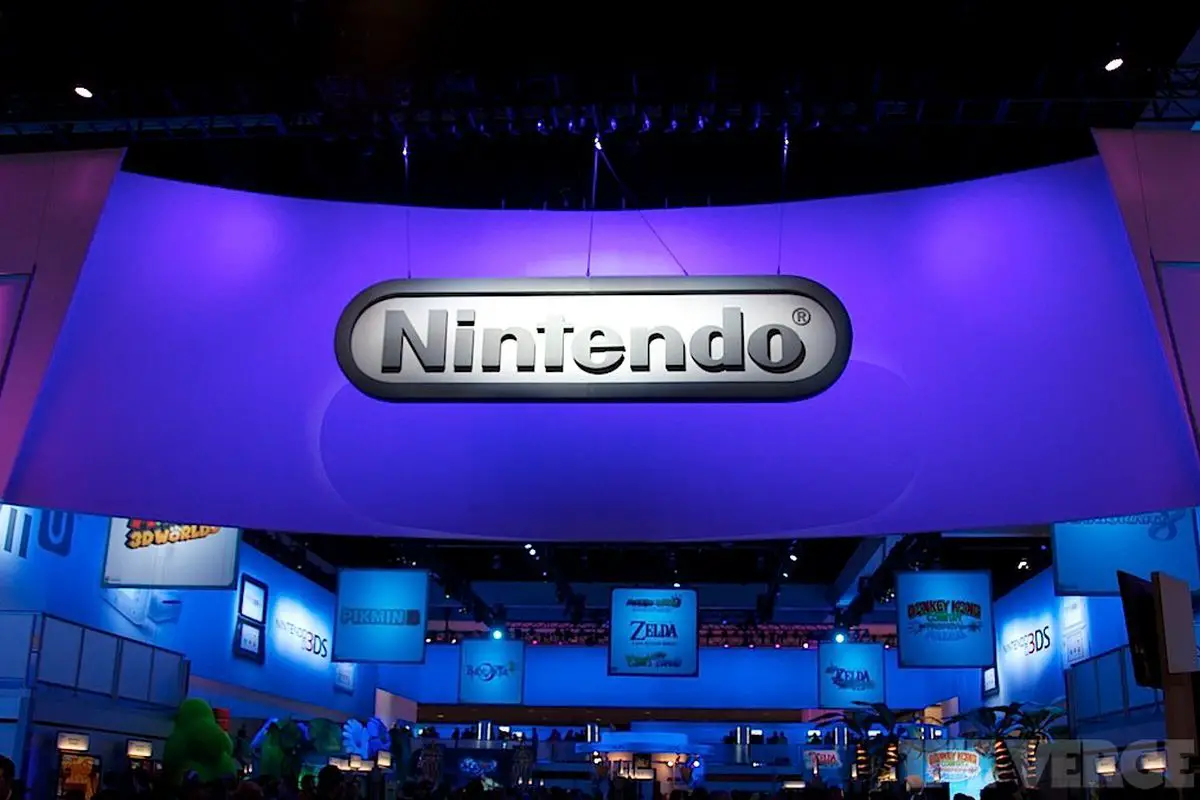Comebacks in megaton media industries are particularly rare. With countless new and hungry content producers impatiently waiting with fresh ideas for their breakthroughs, veteran talent must consistently satisfy consumer demands or risk being snuffed out and obscured by the torrential sea of competition. Throughout its brief history, the adolescent video game industry has proven to be especially volatile for even the most established, respected developers around the world, dramatically transforming the console market during the past twenty years in favor of technological prowess rather than innovative design.
Following the tremendous success of its Genesis console in the early 1990s, Sega gradually devolved from industry titan to struggling third party developer after the ill-fated Dreamcast was smothered in financial failure and its iconic “Sonic the Hedgehog” franchise plummeted in quality upon the transition to three-dimensional platforming. Konami, home of such lauded series as “Metal Gear,” “Castlevania” and “Silent Hill,” has been confronted with widespread backlash from gamers during recent years for its brutal mistreatment of employees, reliance on cheap microtransactions and clueless bastardization of its most dearly beloved properties. These two examples serve to illustrate that falling from grace in the turbulent, cutthroat gaming industry usually spells a descent into perpetual mediocrity and eventual irrelevance from which there is usually no return.
Through over thirty years of industry growth, however, there has remained one exception to this paradigm, a lone company that has constantly been able to rebuild its image and tradition of quality even during the bleakest of scenarios: Nintendo. When the infamous video game crash of 1983 nearly sank the industry, Nintendo intervened with the revolutionary Super Mario Bros., providing a foothold for the gaming industry to eventually blossom into the media behemoth it remains today. After the company’s popularity started to wane during the 2000s following underwhelming financial performances during two consecutive console generations, that of the Nintendo 64 and GameCube, Nintendo reinvented the wheel once again with the motion-controlled Wii, streamlining and normalizing video games to a more widespread audience while restoring the Big N’s name to that of household status. Throughout history, Nintendo has proven capable of reworking its franchises and consoles to remain culturally relevant to the video game industry even when the outlook has seemed impossibly grim.
This seemed to change when it came time to unveil the Wii’s successor, which later came to be known as the endlessly troublesome and confusingly named Wii U console, which released in 2012. Though the Wii garnered unprecedented sales for a Nintendo home console, many dedicated fans soon felt abandoned and alienated by the company’s emphasis on the casual market, moving away from the “Mario,” “Legend of Zelda” and “Pokemon” games they grew up with in favor of supporting Sony’s more adult oriented PlayStation brand or Microsoft’s rapidly successful Xbox chain. The Wii U promised a reversal of this trend after Nintendo insisted that its new console would appeal to the “hardcore” market of gamers prior to release, but these statements ultimately proved empty.
The clunky Wii U GamePad controller touted a six-inch touch screen that, unlike the Wii, immediately felt like an uninspired, gimmicky innovation, and the console’s ambiguous name bewildered mass audiences as to whether or not the new hardware was simply an optional add-on to the Wii, dooming the Wii U to become a financial bust during its lifespan, the worst failure in the company’s long history. As a result, Nintendo ceased support for it in 2015, a mere three years after release, and began scrambling with lazy, handheld spin-off titles and sleazy microtransactions to mend its economic injuries. The pattern was all too familiar for contemporary gamers; like Konami and Sega, Nintendo reeked of desperation and shady business practices. Although the industry icon had recovered from dubious odds in the past, increased competitive pressure from Sony and Microsoft, alongside the company’s more dramatic recent missteps, led many to believe that Nintendo’s time as the champion of video games was coming to an ungraceful close. They weren’t resonating or listening to their fans, and their declining success reflected this disconnect.

Cue this year’s Electronic Entertainment Expo (E3), an annual summer gathering of gaming’s biggest faces for the purpose of holding press conferences and announcing the biggest, most tantalizing video games scheduled for release primarily during the following calendar year. Earlier in 2017, following the release of its new Switch system, a versatile hybrid home console featuring all the capabilities of a handheld mobile device that itself represented a remarkably fresh innovation after the clumsiness of the Wii U, Nintendo began releasing games that indicated a potential change in direction back to the proud company of old.
“The Legend of Zelda: Breath of the Wild” returned the titular series to its nonlinear explorative roots, crafting one of the most expansive, wondrous open worlds in modern gaming. Soon after, “Fire Emblem: Echoes,” a remake of the thirty-year-old “Fire Emblem Gaiden,” abolished the unappealing fanservice pandering of recent entries in the enduring franchise, opting to focus on the intricate strategy and clever storytelling that initially popularized the series. Promising new hardware and genuinely exciting software releases meant that Nintendo finally possessed a semblance of momentum and approval heading into their E3 digital showcase. Lackluster showings from their closest competitors further opened a precious window of opportunity for Nintendo to demonstrate a new, exciting direction of healthy communication with gamers that the company had abandoned for over a decade.
Deliver on that potential they did; Nintendo stole the show at E3 2017, cementing their unprecedented comeback from the brink of corporate indulgence and irrelevance with wondrous announcements and trailers that reminded many of why they fell in love with this company in the first place. Previously announced games such as “Xenoblade Chronicles 2,” a canonical sequel to one of the most widely beloved Japanese RPGs of all time, and “Super Mario Odyssey,” a joyous return to the open world, freeform platforming of the classic “Super Mario 64,” were featured in full glory with jaw-dropping trailers and gameplay demos.

With its colorful style, the latter of the two ignited childlike glee from even the most hardened, cynical adult fans, and the release was also crowned the best game of the event by several notable gaming media outlets. Smaller announcements, such as new “Kirby” and “Yoshi” platformer games for the Switch, appealed to a notable niche demographic of casual Nintendo supporters, while E3 tournaments for “ARMS,” “Pokken Tournament DX” and “Splatoon 2” reinforced the company’s newfound outspoken support of competitive eSports players across many different franchises. However, above all else, the shocking announcement of not one, but two new “Metroid” games outrightly confirmed Nintendo’s positive new direction and return to the forefront of the video game industry.
Yes, “Metroid,” the long troubled franchise that once stood alongside “Mario” and “Zelda” as one of Nintendo’s core three franchises that continually delivered legendary titles, as incredible as they were groundbreaking. From its debut in 1986, the series, starring bounty hunter Samus Aran as an isolated space explorer traversing treacherous alien landscapes, served as the epitome of quality, never succumbing to a single misstep and crafting some of the most innovative action exploration games of all time such as “Super Metroid” and “Metroid Prime.” However, in 2010 the franchise nosedived with the infamous “Metroid: Other M,” an awkward experiment gone horribly wrong that butchered the integrity of Samus’ character, replacing independence and understated resolve with dependence on male superiors and daddy issues, while decimating the atmospheric immersion of earlier games with bombastic, mindless action.
The game was so poorly received that the series went on indefinite hiatus only to make an unremarkable return in 2016 with the cheap spin-off title, “Metroid Prime: Federation Force,” a game widely despised for its removal of Samus and reliance on multiplayer cooperation, the antithesis of the series’ appeal. Most “Metroid” devotees don’t acknowledge the game’s existence, and it dramatically sank Nintendo’s public image upon its underwhelming reveal at E3 2015. Heading into E3 2017, it had been seven years since the last wholehearted attempt at a “Metroid” title and a full decade since the last great one, “Metroid Prime 3.” Fans were starved for Samus to return to glory, but hope was starting to fade that the series would ever receive another entry.
Then Nintendo dropped the bombshell during their digital event: “Metroid Prime 4” is now in development for the Switch, a game long desired and clamored for by gamers, arguably more so than any other hypothetical Nintendo product, but one commonly cast aside as nothing more than a pipe dream. As the icing on top of an already delicious cake, “Metroid: Samus Returns” was announced as a handheld remake of “Metroid 2,” returning the series to its two-dimensional nonlinear beginnings. These two announcements did more than cause the “Metroid” fanbase to collectively stare wide-eyed, drop-jawed and weak-kneed; on a grander scale, they signaled that Nintendo, after a decade of stubborn complacency and negligence, is finally willing to open its ears and listen to its supporters.

Nintendo could have argued for every reason to permanently shelve “Metroid” after the perceived creative failures of “Other M” and “Federation Force,” but they’re throwing loyal consumers a bone after mistreating them for an inexcusable amount of time, an act of surprising generosity that other major video game publishers are commonly hesitant to so transparently provide. Delivering “Metroid” from the brink of franchise limbo does more than simply ensure two fantastic future titles and revive a beloved franchise. This decision, representing a microcosm of the other agreeable hardware and software choices the company has made since last fall, confirms Nintendo’s new leaf as a trustworthy, communicative company that can take the necessary steps toward restoring its reputation and reviving its core fandom.
Continuing on the current trajectory Nintendo has taken in returning cherished franchises such as “Mario,” “Zelda,” “Fire Emblem” and, most crucially, “Metroid” to symbols of excellence, the most iconic video game brand in the industry can continue to reinvent and adapt itself to make another extraordinary comeback to the forefront of gaming in a way that other companies appear unable to accomplish.

















